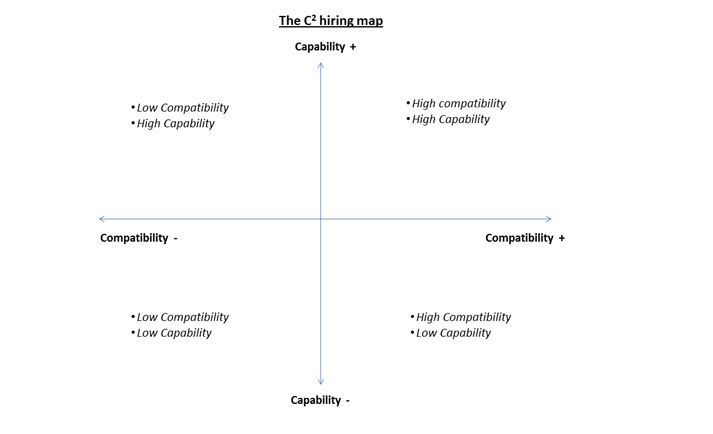Tips and tricks on how to hire right!
Disclaimer: The view presented in the article belongs to the author and has been drawn from his experience.
“It’s all about the team,” how many times have you heard VCs tell you that? It’s true. Hiring right is the one of the biggest issue for most startups. Maybe even the biggest. To get access to the right talent, understanding where they will fit, figuring out whether they are the right ones for you and finally getting them onboard is a tough task to say the least. Especially in the days when you aren’t known, don’t have a huge bank balance and have little else than stars in your eyes (which might not be visible to the person sitting across from you).
In my journey over the past 3 and a half years, I have felt the pain, and continue to feel it. Having said that, I have learnt a lot along the process, and I thought that it would be good to share some tips and tricks that can help tackle some of the most common questions that come up about hiring over the life of any company.
Q1: What should I look for in a co-founder?
Ans: Three things to bear in mind when looking for a co-founder:
- Look for someone who is better than you at some functions, and you are better than him/her at some other functions.
- Someone who is as passionate about the idea as you are (if not more).
- Credibility helps (but also depends on your own age as well).
Three reasons that should NOT be considered for a co-founder:
- The person is a friend / a relation (but doesn’t meet the criteria above)
- Has the money to get the business off the ground, and doesn’t meet the criteria above (PLEASE don’t make this mistake. You will spend the worst 6 months of your life)
- Has been referred by someone you know, so must be good. Please test him yourself first!
Q2: Where do I look for a co-founder/employees?
Ans: Everywhere- at parties, while with friends, at hangouts, Barcamps, your ex colleagues, bosses, through recommendations, in lifts, lobbies, airports! Keep your eyes and ears open everywhere. This route should be followed for pretty much the first 10 employees of the company!
Q3: How do I get good talent in the beginning? I don’t have the money to pay market rates.
Ans: Usually – that’s the case with almost every entrepreneur. One of the most important parts of being an entrepreneur is being able to sell, and it all starts with being able to sell a vision, and then be able to back that up. There are people out there who will be extremely passionate about the work, don’t care for huge salaries, and are quick; Jack of all trades, who are ready to do anything – the same as you. Finding them is tough – and I would revert to the same routes as that elucidated above. I did – and got lucky.
Q4: How do I split equity in the business?
Ans: I was a consultant before becoming an entrepreneur – and so resorted to making an excel sheet. Simple enough sheet. List down the various functions that are critical for your business, give weights to them, and then see who contributes how much to it. The weighted average would give you a broad equity structure to start the negotiations from. The operative term here is that you need a basis to start. The sheet should be filled out together and agreed upon by all the founders. (Download a Equity Calculator Template)
Q5: What about sweat equity to the first few employees?
Ans: Equity must be given, but that discussion is to be had a few months down the line, when you are certain that this is the guy. You don’t want to be in a position that you have transferred & vested shares etc, but the person is not the one you want. Set aside a pool, and communicate it early on. Once done – you can give sweat equity.
Q6: So now we have progressed a bit, but can’t still open up our purse strings completely – what are the best ways to recruit great talent?
Ans:
- Referrals: Clearly the best and most inexpensive route. Setup an internal referral program (if someone refers someone, and he stays for x months – the referrer gets a cash / kind reward)
- LinkedIn: Reach out directly and connect. Get their phone numbers and sell to them. Sell like mad.
- Job posts: Lots of frequently visited job posting sites nowadays – put up something that attracts good talent
- For the really serious stuff: Get an HR consultant. They will cost something, but it’s worth the cost if you get the right guy. I know that we got lucky!
Q7: Alright – but how do I know through an interview whether the guy is actually good for my company or not?
Ans: To be honest, not everyone will be able to follow what I list down here. We didn’t follow it consciously for a long time either - but are now moving towards it. I can tell you, this is the most important part of hiring. Get this right. You might not be able to do it right now – but keep this in mind, and whenever you can – do it!
When considering someone for your team, evaluate them along two axis:
Compatibility and values:
- Is the person similar to you?
- Does (s)he stand for similar things as you?
- Do the same issues bother them?
- Would you be fine spending 3 hours at an airport stuck with him/her?
- Are the things that are important for the business important for him/her? (Deadlines, quality, etc.)
In essence – is there a match. Will you guys enjoy working together in the stressful environment that every startup is bound to throw up?
Capabilities:
- What’s the person’s track record?
- What can he do? (try him out)
- Can he execute well enough?
- Do his references pan out?
In essence – can the person deliver?
Here is the graph that you should plot in your mind. You can make it as objective as you want, or as subjective as you want – either ways, it helps.

I would choose people from:
Quadrant 1: A definite hire. They are compatible with the organization and capable enough to deliver the goods
Quadrant 4: They might not be extremely capable, but they are compatible with you. It’s easier to get these people to move to quadrant 1, than the people in Quadrant 2. You can enhance your skills, not change your nature.
Quadrant 2: A capable guy with a bad fit to the company is not the best thing to have in your team. There could be exceptions to the rule – but not usually.
For obvious reasons, I would definitely not hire someone from Quadrant 3.
Q8: Ok – so I figured all this out, made the offer – he accepted. How do I now ensure that he joins?
Ans: This is a common issue – and one which gets mitigated to a large degree if you have done 1 – 7 correctly. If not, there is a 50% probability of a drop off. One of the ways to really tackle it is constant engagement and communication. Another thing that usually works for critical positions – and is used extensively by large companies is the joining bonus. The logic is simple: The joining bonus hits you today, but locks in the person for a specific time period, and is more likely to get him to join. It’s better to give a joining bonus to a person, than to wait for another couple and lose out on great talent. With a joining bonus, you are reasonably assured that the person will join, but don’t rely only on that. Engage him with the rest of the team. Talk to them about wins, about parties and assign someone from your team (or you yourself) who is responsible to bring the person in.
That’s it for the hiring piece, and the next one will be on managing a team and systems to scale it. In the meantime, go ahead and read these books if you are really serious about pulling together a Grade A team:
- Topgrading by Bradford D Smart
- Mastering the Rockefeller habits by Verne Harnish
Feedback and additional insights welcome!











